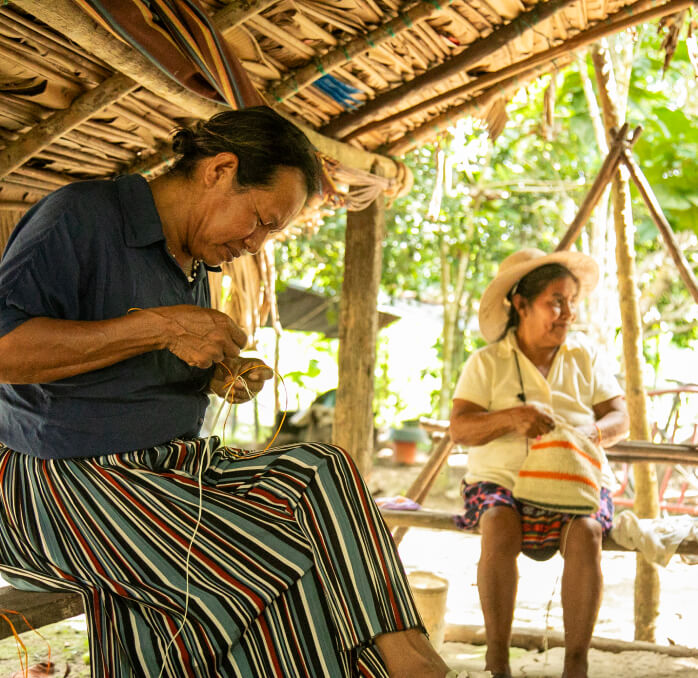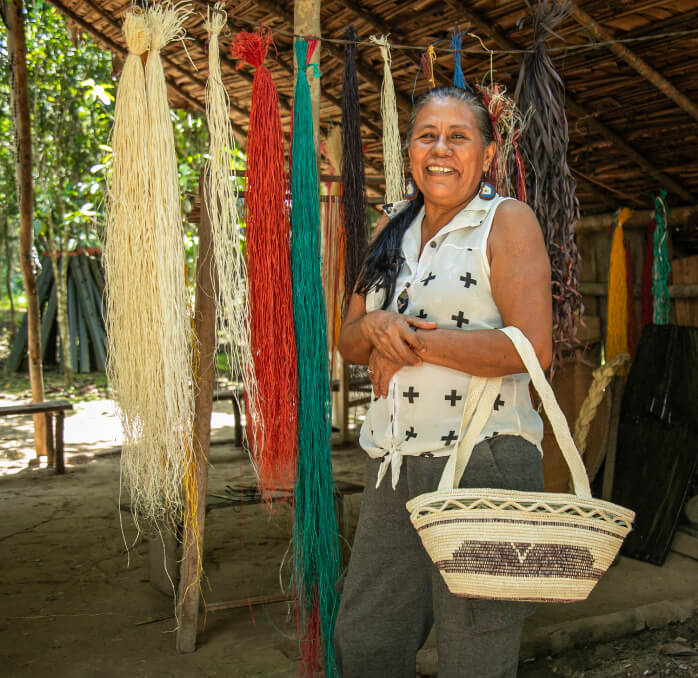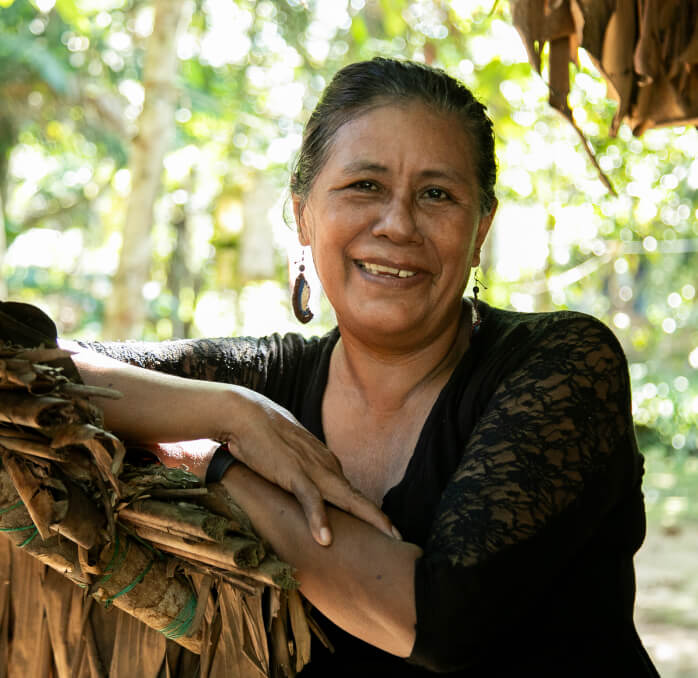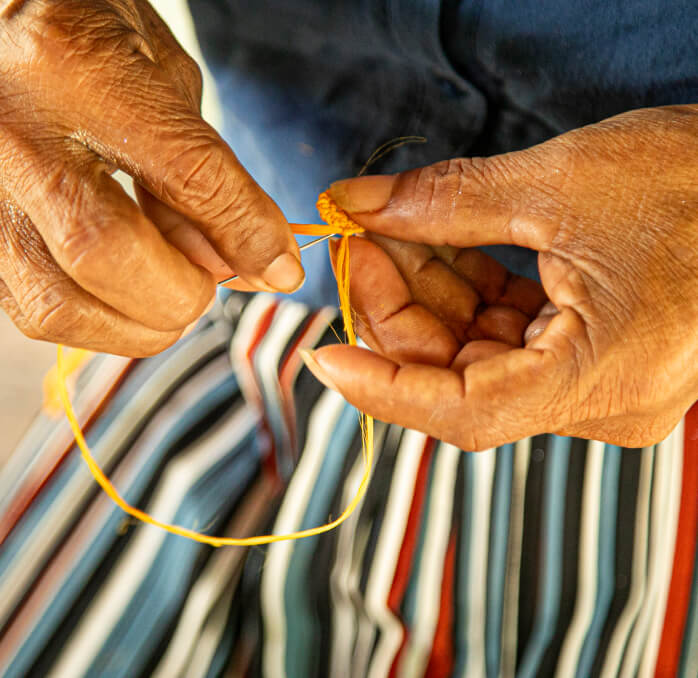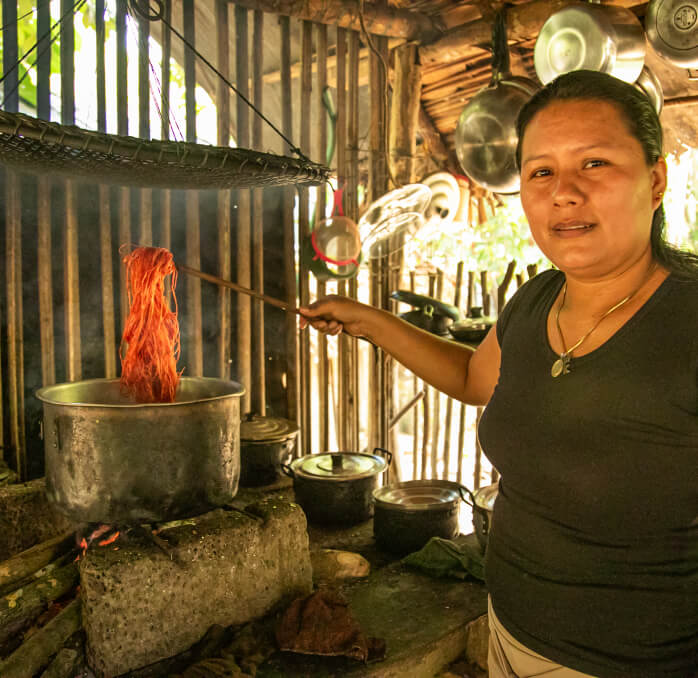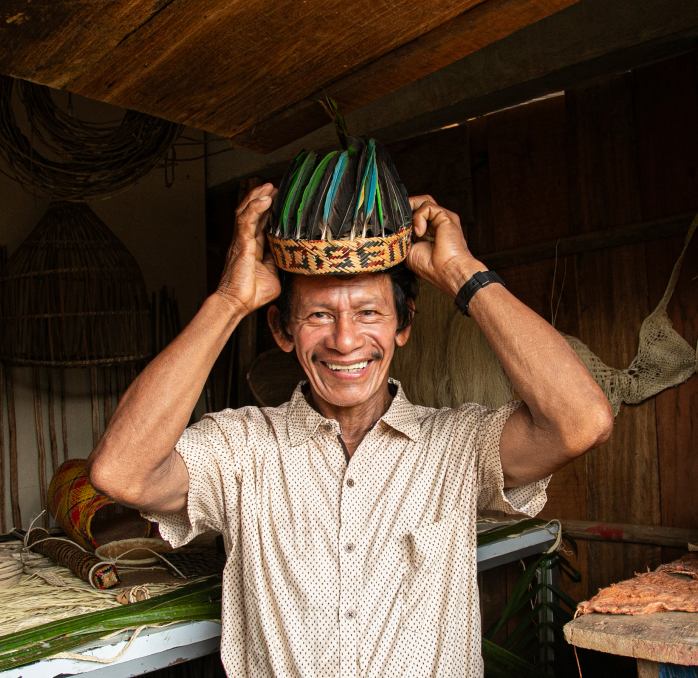Arlety Quiroz Ramírez
Workshop: Taller artesanal Arlety
Craft: Cestería y tejeduría
Trail: Guaviare Route
Location: San José del Guaviare, Guaviare
SCHEDULE YOUR VISIT
Resguardo indígena El Refugio, San José de Guaviare, Guaviare
3223246265
3115469579
Fondo Mixto de Cultura de Guaviare (Alba Lucía Martínez): 3156779691
242leidy@gmail.com
Arlety Quiroz embodies the languages and customs of both her maternal and paternal families, as well as those of the diverse ethnic groups inhabiting Guaviare. It all began with her parents, who crossed paths in Colombia during the rubber boom. They came from Brazil and belonged to distinct ethnic backgrounds: her mother, Guanano, and her father, Tariano. Initially, her father arrived and worked in solitude, distancing himself from his own people. Before long, he found himself speaking the language of his fellow workers, the Tukanos, while his mother tongue faded away. After meeting Arlety’s mother, they settled in Guaviare and went on to raise seven children, with Arlety being the eldest.
Arlety fondly recalls watching her maternal grandmother, Amelia Ramírez, skillfully weaving bracelets from undyed moriche palm fibers. She would tie each newborn girl’s ankles in the family with these bracelets, believing it would help their legs grow strong and robust. At that time, Arlety’s focus was not on crafts, but she was confident that her indigenous heritage endowed her with a natural talent for it. The image of her grandmother weaving was etched permanently in her mind and it was of use when, in her thirties, Arlety decided to learn the art of weaving, joining a group of women. Her children had started attending school in Miraflores, and she approached the weavers, seeking their guidance. She began by learning how to weave bags with the cumare fiber they provided, and eventually, she learned to harvest her own fibers.
She discovered that cumare was a thorny palm capable of sprouting a shoot from which fibers suitable for weaving may be drawn. These fibers needed to be scrapped, cleaned, and washed with soap before being dried under sunlight. White fibers were selected, while yellowish ones were dyed. The maracataña tree bark served to dye the fibers yellow, and the leaves of the carayurú vines dyed them red. These vines were also used for creating pigments applied to their faces during traditional dances and celebrations. Arlety mastered the use of these fibers to craft bags, baskets, and hats. Nowadays, it takes her two days to complete a single bag. She prefers to avoid intricate designs or time-consuming motifs, understanding that they do not necessarily yield greater profits. The simple rasper motifs she creates draw inspiration from the curripako people’s tool for grating bitter cassava, featuring underground trails of the manivara ants, drawn with small stones on a stick.
Arlety points out that every tribe has its own weaving tradition, with each one known for distinct crafts. The Tukano people, for example, fashion wooden thought benches, while the Guanano people excel in making baskets from warumá fibers. When it comes to the Tariano people, she is uncertain about their crafts. It has been a long time since her father last conversed in their language with anyone else. He remains the sole Tariano in the indigenous reservation where they reside. Although he retains the heritage of their traditional dances, he has lost contact with his distant relatives in Vaupés and Brazil. In contrast, Arlety inherited the languages of her ancestors: Guanano from her mother and grandmother, and Tucano from both her parents. She communicates in Guanano, her mother tongue, with her children, and converses in Tucano with her partner. For interactions with the Cubeo people who share their territory, she uses Cubeo. These three languages, along with Spanish, which she learned at her school in Miraflores, have become second nature to her. Arlety is not just a craftswoman; she is also a custodian of languages and weaving traditions that transcend ethnic boundaries.
Craft
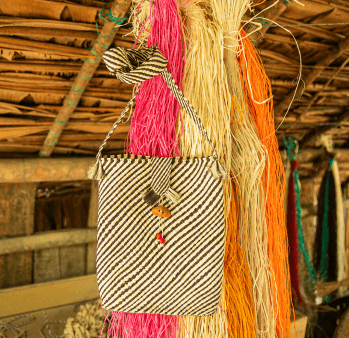
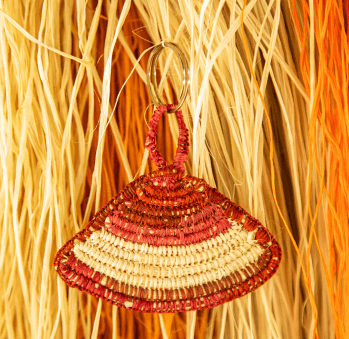
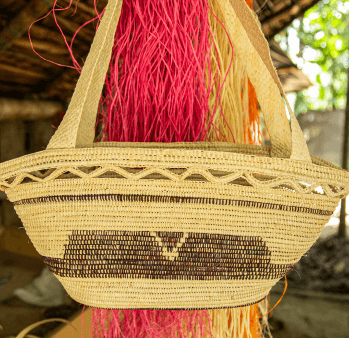
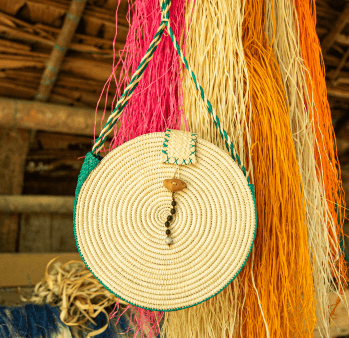
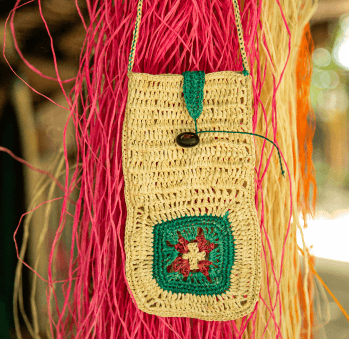
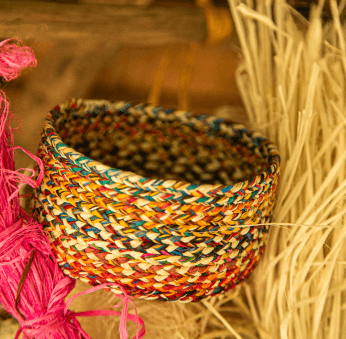
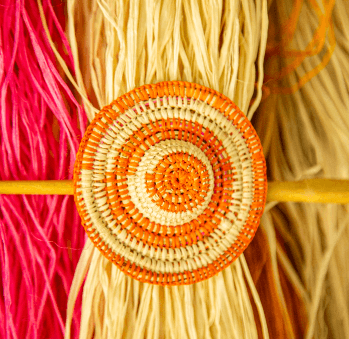









Artisans along the way
Artisans along the way
No puede copiar contenido de esta página








































